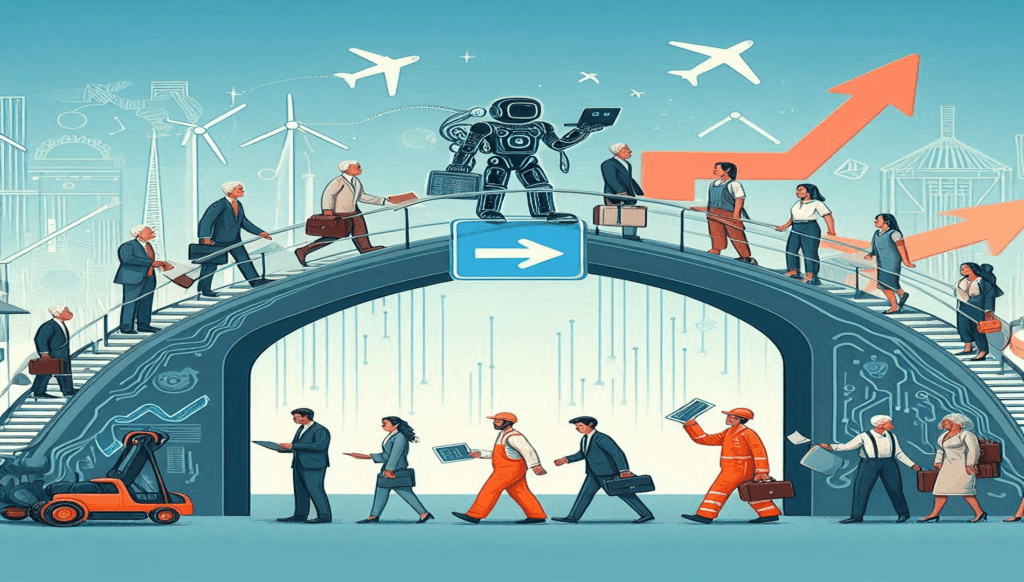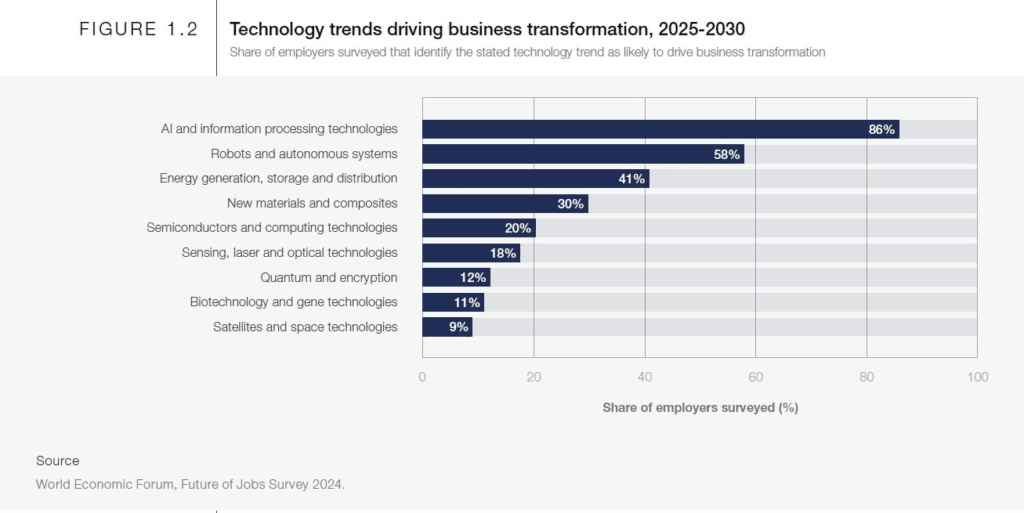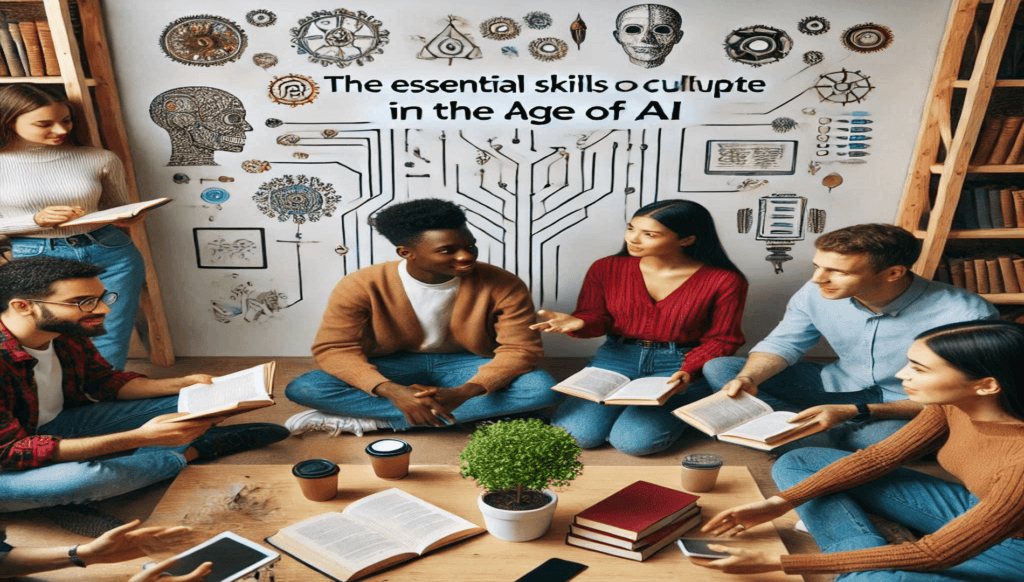
The Rising Importance of Human Skills
In an era dominated by artificial intelligence and automation, it’s easy to assume that machines will eventually take over the workforce. However, I believe that the real future of work isn’t about replacing humans but about leveraging human skills alongside technology to create a more innovative, efficient, and dynamic workplace. As automation takes over routine tasks, human skills—such as emotional intelligence, leadership, creativity, and adaptability—are becoming more crucial than ever.
The World Economic Forum’s Future of Jobs Report 2025 underscores this shift, highlighting that “human skills” such as creativity, originality, initiative, critical thinking, persuasion, and negotiation will retain or even increase in value. McKinsey’s research further supports this by emphasizing that future-ready companies thrive by fostering purpose-driven cultures, prioritizing agility, and continuously upskilling their workforce. These skills are the foundation of effective teamwork, innovative problem-solving, and meaningful customer interactions—capabilities that differentiate us from machines. But why are these skills so critical, and how can organizations prioritize them? Let’s dive deeper.
The Enduring Power of Human Skills in a Technological World
Are we on the verge of a fully automated workplace? The short answer is no. While technology continues to advance at a rapid pace, it cannot replace human attributes like emotional intelligence, complex decision-making, or the ability to inspire others. The demand for human skills is increasing, even in highly technical fields.
- Emotional Intelligence: The ability to manage one’s emotions and understand the emotions of others is essential for leadership, conflict resolution, and fostering workplace relationships.
- Leadership and Social Influence: Strong leaders who can guide, motivate, and inspire teams will always be indispensable.
- Service Orientation: Employees who can understand and prioritize customer and stakeholder needs will drive business success.
Machines can process vast amounts of data, but they lack the ability to navigate social dynamics or inspire teams toward a shared vision. This is why the future of work is about striking the right balance—leveraging automation for efficiency while empowering human employees to use their unique skills to drive innovation and engagement.
The Growing Demand for Socio-Emotional Skills
One of the most notable trends in the workforce is the increasing demand for socio-emotional skills across industries. Fields like healthcare, infrastructure, and consumer goods are seeing these skills reach parity with technical abilities. For example, a doctor’s ability to empathize and communicate effectively can be just as important as their medical expertise. Similarly, a data analyst who can convey insights and collaborate with stakeholders will be far more valuable than one who solely crunches numbers.
The WEF Future of Jobs Report 2025 identifies key human skills that are growing in importance:
- Active Learning: The ability to continuously acquire new knowledge and apply it effectively.
- Resilience: The capacity to recover from setbacks and adapt to change.
- Stress Tolerance: The ability to perform well under pressure.
- Flexibility: The willingness to embrace change and navigate uncertainty.
Additionally, McKinsey’s research highlights how HR leaders must focus on building organizational agility and aligning talent with business priorities to cultivate these competencies effectively. These skills are no longer just desirable; they are essential for employees to thrive in today’s fast-paced, unpredictable work environments.
Why Focusing on Human Skills is Good for Business
Beyond the ethical argument for prioritizing human skills, there’s also a compelling business case. Organizations that invest in developing these skills among employees will see tangible benefits:
- Enhanced Collaboration and Teamwork: Strong interpersonal and communication skills improve workplace synergy, leading to greater productivity and innovation.
- Improved Customer Satisfaction: Employees with high empathy and service orientation can build stronger relationships with customers, improving retention and brand loyalty.
- Greater Innovation and Creativity: Analytical and creative thinking drive the development of new solutions, keeping organizations competitive.
- Better Leadership and Employee Engagement: Leaders who are emotionally intelligent and socially skilled foster a more engaged, motivated workforce, leading to higher retention rates.
- Stronger Adaptability to Change: A workforce with high resilience and flexibility is better equipped to navigate disruptions and seize new opportunities.
McKinsey’s report on HR’s evolving role in organizations further stresses that future-ready companies embed these skills into their cultures and operational models, making them central to long-term strategic success.
The Role of HR in Cultivating Human Skills
So, how can organizations foster these vital skills? This is where HR plays a crucial role. As the workforce evolves, HR must prioritize the development of human skills through strategic initiatives:
- Revamping Recruitment Practices: Companies must go beyond technical assessments and evaluate candidates’ human skills through behavioural interviews and skill-based assessments.
- Investing in Training and Development: Organizations should offer workshops, mentoring programs, and coaching sessions focused on developing emotional intelligence, leadership, and problem-solving skills.
- Fostering a Culture of Empathy and Collaboration: Encouraging open communication, recognizing teamwork, and prioritizing employee well-being can help embed these skills into the organizational fabric.
- Leveraging Technology for Development: AI-powered learning platforms can personalize training programs to enhance human skills development.
HR’s role is not just in fostering skills but also in driving organizational identity, agility, and scalability. Future-ready HR departments will ensure companies remain competitive by integrating lifelong learning and purpose-driven leadership into their core structures.
Human Skills: A Competitive Advantage in the Future
Ultimately, organizations that prioritize human skills will gain a significant competitive edge. While technical skills and AI-driven efficiencies are essential, they alone will not ensure long-term success. The differentiator will be the human ability to connect, innovate, and adapt.
The WEF Future of Jobs Report 2025 advises that organizations must take a long-term, strategic approach to workforce development, focusing not just on current job demands but also on cultivating the skills needed for future roles. McKinsey’s research similarly suggests that leaders must proactively map talent to value and create dynamic, purpose-driven workforces.
The Importance of Lifelong Learning and Adaptability
To truly harness human skills, organizations and individuals must embrace lifelong learning. Adaptability and continuous learning are becoming non-negotiable for career success. Companies should foster a culture of continuous development by providing access to training and career growth opportunities.
McKinsey emphasizes that future organizations will need to be agile, data-driven, and people-first, ensuring that continuous learning is embedded into the very fabric of work.
Here’s What I Think:
The emphasis on human skills is not just a passing trend; it represents a fundamental shift in how we perceive the future of work. Organizations that recognize this shift and invest in cultivating these skills will be the ones that thrive in the years ahead. While AI and automation will continue to reshape industries, the human touch—our creativity, emotional intelligence, and ability to connect—will remain irreplaceable. It’s time for businesses to acknowledge that technology alone isn’t the answer. The real power lies in people—those who drive change with their passion, ingenuity, and ability to inspire others. The future of work is, at its core, profoundly human.
Sources of Insights
- World Economic Forum. (2025). The Future of Jobs Report 2025.
- McKinsey & Company. (n.d.). The New Possible: How HR Can Help Build the Organization of the Future. McKinsey

Ajay Dhage is a seasoned Talent Acquisition leader with over 20 years of experience in recruitment and workforce strategy. Currently serving as the Talent Acquisition Lead for a global Oil & Gas EPC Company in India, ajay oversees the entire talent acquisition lifecycle across diverse and complex projects, from sourcing to onboarding and aligning top talent with complex organizational goals. With a proven track record in industries such as oil and gas, EPC, and renewables, he brings a customer-focused approach and innovative mindset to every project.
Through ajayable.com, ajay aims to share insights, trends, and strategies to empower HR professionals, Organizations and recruiters to excel in a competitive talent landscape.














